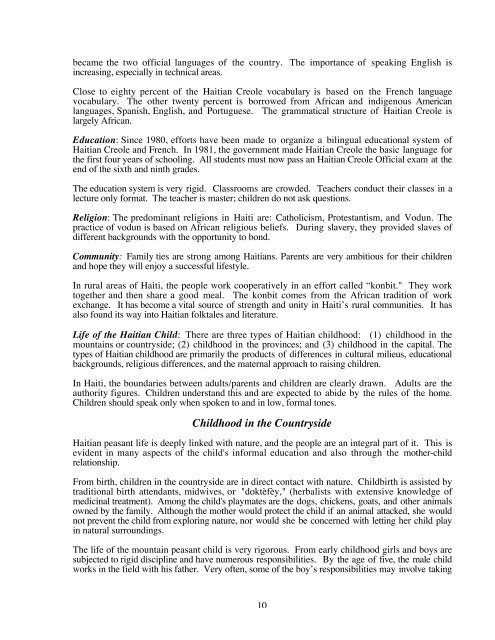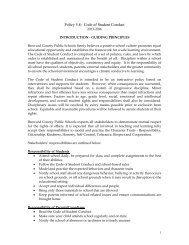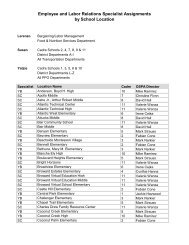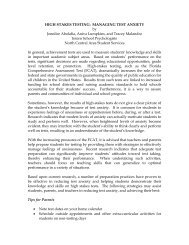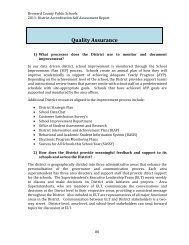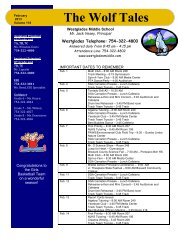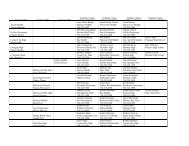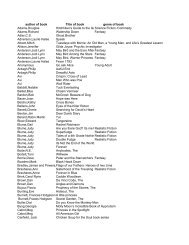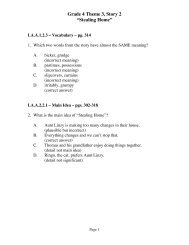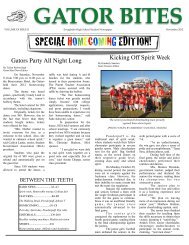Haitian Culture Curriculum Guide
Haitian Culture Curriculum Guide
Haitian Culture Curriculum Guide
You also want an ePaper? Increase the reach of your titles
YUMPU automatically turns print PDFs into web optimized ePapers that Google loves.
ecame the two official languages of the country. The importance of speaking English is<br />
increasing, especially in technical areas.<br />
Close to eighty percent of the <strong>Haitian</strong> Creole vocabulary is based on the French language<br />
vocabulary. The other twenty percent is borrowed from African and indigenous American<br />
languages, Spanish, English, and Portuguese. The grammatical structure of <strong>Haitian</strong> Creole is<br />
largely African.<br />
Education: Since 1980, efforts have been made to organize a bilingual educational system of<br />
<strong>Haitian</strong> Creole and French. In 1981, the government made <strong>Haitian</strong> Creole the basic language for<br />
the first four years of schooling. All students must now pass an <strong>Haitian</strong> Creole Official exam at the<br />
end of the sixth and ninth grades.<br />
The education system is very rigid. Classrooms are crowded. Teachers conduct their classes in a<br />
lecture only format. The teacher is master; children do not ask questions.<br />
Religion: The predominant religions in Haiti are: Catholicism, Protestantism, and Vodun. The<br />
practice of vodun is based on African religious beliefs. During slavery, they provided slaves of<br />
different backgrounds with the opportunity to bond.<br />
Community: Family ties are strong among <strong>Haitian</strong>s. Parents are very ambitious for their children<br />
and hope they will enjoy a successful lifestyle.<br />
In rural areas of Haiti, the people work cooperatively in an effort called “konbit." They work<br />
together and then share a good meal. The konbit comes from the African tradition of work<br />
exchange. It has become a vital source of strength and unity in Haiti’s rural communities. It has<br />
also found its way into <strong>Haitian</strong> folktales and literature.<br />
Life of the <strong>Haitian</strong> Child: There are three types of <strong>Haitian</strong> childhood: (1) childhood in the<br />
mountains or countryside; (2) childhood in the provinces; and (3) childhood in the capital. The<br />
types of <strong>Haitian</strong> childhood are primarily the products of differences in cultural milieus, educational<br />
backgrounds, religious differences, and the maternal approach to raising children.<br />
In Haiti, the boundaries between adults/parents and children are clearly drawn. Adults are the<br />
authority figures. Children understand this and are expected to abide by the rules of the home.<br />
Children should speak only when spoken to and in low, formal tones.<br />
Childhood in the Countryside<br />
<strong>Haitian</strong> peasant life is deeply linked with nature, and the people are an integral part of it. This is<br />
evident in many aspects of the child's informal education and also through the mother-child<br />
relationship.<br />
From birth, children in the countryside are in direct contact with nature. Childbirth is assisted by<br />
traditional birth attendants, midwives, or "doktèfèy," (herbalists with extensive knowledge of<br />
medicinal treatment). Among the child's playmates are the dogs, chickens, goats, and other animals<br />
owned by the family. Although the mother would protect the child if an animal attacked, she would<br />
not prevent the child from exploring nature, nor would she be concerned with letting her child play<br />
in natural surroundings.<br />
The life of the mountain peasant child is very rigorous. From early childhood girls and boys are<br />
subjected to rigid discipline and have numerous responsibilities. By the age of five, the male child<br />
works in the field with his father. Very often, some of the boy’s responsibilities may involve taking<br />
10


